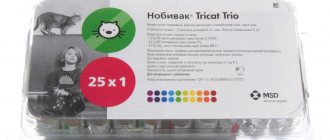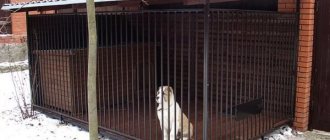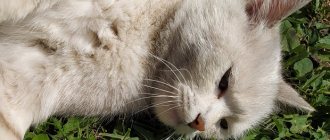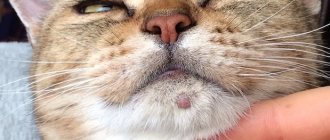Author: stabskapitan
18 November 2021 20:13
Tags: animals interesting to know interesting facts insects scolopendra
20207
23
7
Scolopendras are insects, or, more precisely, arthropods. They live in all climatic regions, but the giant scolopendra can only be found in the tropics; the large scolopendra especially likes to live in the Seychelles, the local climate suits it best.
0
See all photos in the gallery
Features of the structure of scolopendra
Although Scolopendra has more than 600 species, the armored arthropods belonging to the order Scolopendra (genus Labiopods) still have common characteristics.
Information! We usually call the scolopendra an insect, but in reality the order belongs to the animal kingdom.
Outwardly, it looks like a worm, black, brown with green splashes, gray, and beige in color. One individual can be painted in several colors - it all depends on the species.
The long body is divided into segments (21-23 of them), equipped with a pair of legs, which is why the arthropod is often called a centipede or centipede. The body is dense and mobile due to flexible membranes connecting segments covered with a hard shell of chitin. The length of the insect reaches 10 cm in temperate climates, and in the warm tropics there are individuals up to 30-35 cm long.
The two front legs, along with the motor function, perform grasping movements - with their help, prey is captured and sent to the mouth. The last pair of legs, which is larger than the others, also has an additional function - it plays the role of an anchor. On each leg there are claws connected to glands, filled with a toxic substance, the composition of which differs from species to species. Interestingly, the limb is capable of regeneration and grows back after partial loss.
The flat head has two antennae, jaws with poisonous glands and two eyes that can only distinguish between light and darkness, since the main habitat of centipedes is deep in the earth. They navigate thanks to their excellent sense of touch, which they use with their antennae.
Habitat and lifestyle
The main habitats of scolopendra are concentrated in regions with a warm tropical climate: the South American and Australian continents, the central regions of Africa. Some species live in the south of Europe and Asia; in Russia they are found only in the warm climate of the Caucasus and Crimea.
We can say that the insect’s habitat is soil, since life underground is a necessity for it due to its structural features. The peculiarity is that in the air there is a rapid loss of moisture, and in the thickness of the earth the environment is humid and warm. At temperatures below 0 °C, the centipede dies.
Being underground, the scolopendra moves deftly and quickly, using passages and burrows dug by other insects, or digs them itself. The objects of hunting for her are worms, beetles and their larvae, spiders, and sometimes flies and wasps. Having captured the prey with the front pair of legs, the predatory insect immobilizes it with the help of its jaw with a poisonous liquid, and only then sends pieces of the victim into the throat, chewing slowly and thoroughly.
For representatives of large species, prey includes snakes, lizards, frogs, and bats.
Scolopendras prefer to live alone; they are not aggressive towards their fellows, but in the event of a single combat, they fight to the bitter end, tenaciously squeezing their opponent in a “hug” and not letting go until his death.
It is difficult to see them during the day, because until night they hide under stones and in the grass, and begin hunting at nightfall and use their antennae to navigate unmistakably. Many legs and a flexible body allow them to deftly climb vertical surfaces, ceilings, and penetrate narrow cracks and small holes.
Reproduction
In the second year of life, puberty begins and the scolopendra is ready to continue the race. During the mating process, the female takes sperm from the cocoon that forms in the ring at the end of the male’s body into her genitals. The clutch is laid in late spring or early summer, and consists of approximately 100-120 eggs. The female protects the eggs, holding them between her legs during maturation.
The white larvae that hatch after 2-3 months grow very quickly and lead an active lifestyle, since the mother leaves them after a few days. Their color becomes darker with each molt and will remain constant after puberty.
Reference! Life expectancy is long - up to 7 years, which is rare for insects.
Lifestyle
How scolopendra attacks
Animals go hunting at night, preferring to wait out the heat of the day in a shelter. What does scolopendra eat? She is a predator, so her diet consists of only caught prey. Invertebrates and small animals cannot escape from the rapid rush and paralyzing poison. Young individuals feed on insects, while adults attack anyone who is not larger than the centipede itself. It could be a small snake, bird or lizard.
Attention. The venom of the giant tropical scolopendra is dangerous to humans. It causes numbness and temporary paralysis. The pain is equivalent to the sting of 20 bees.
The centipede eats its prey for several hours, biting off pieces from living but paralyzed prey. Her digestive system is primitive, so it takes a long time to get full. After the meal, the animal washes itself, passing the antennae and legs alternately through the jaws.
Reproduction
The breeding season occurs at the end of spring - beginning of summer. The male leaves a spermatophore - a sac with seed, and the female crawls through it, picking up the sperm. To lay eggs, the female digs a hole. This unpleasant animal is a caring mother. She protects the eggs and emerging babies by wrapping her legs around them. There are up to 100 centipedes in one clutch. The mother violently attacks anyone who approaches the shelter. It not only protects the eggs, but cleans them so they don't become moldy. Small centipedes are white in color and their bodies are soft.
The family does not stay together for long; the scolopendra soon crawls away. The offspring grows quickly, surviving several molts. Centipedes' bodies darken, but the colors will change until they reach maturity. Cases are common when larger individuals eat smaller ones.
Man and scolopendra
The degree of toxicity can be judged by the color of the scolopendra - the brighter it is, the more poisonous the insect. For each species, the composition of the poisonous substance is different and, accordingly, the reaction to the bite will be different.
For example, the scriptopus (blind scolopendra) has weak jaws and will not bite through the skin, but the crushed remains are very poisonous and cause a strong reaction when they come into contact with the skin. For a bird that pecks at this insect, the outcome is sad - it will die after a few hours. In the Californian scolopendra, the substance it secretes has a strong irritating effect, and after it “runs” across the skin, small painful scratches remain on it.
Possession of a poisonous liquid does not make the scolopendra too aggressive - it will not attack unless you pick it up. It can bite if it crawls into a person’s home or tent, where it is accidentally touched or crushed. In defense, she begins to jump and move very quickly, deftly wriggling. She does not consume the toxic substance every time, but only when absolutely necessary - she has so much of it. Redness (mark) on the skin remains from the mucus that the insect leaves behind.
Once on the skin, scolopendra will not necessarily bite or leave a mark. She may just run by and not show any attention, or she may become aggressive. Her desire and the circumstances prevailing at that time play a role here.
On a note! The reaction to a bite depends on the type of scolopendra and on the characteristics of the human body. For some, the redness at the site of the bite will be severe, for others it will be very slight, but in any case, the skin needs to be washed, treated with any disinfectant, bandaged and see a doctor. Tropical varieties are more dangerous to humans and the swelling from their bite can last for several days.
Consequences of a bite for a person
Since the centipede's venom is not very toxic, and victims most often do not require hospital treatment, the residual effects of poisoning are insignificant.
The consequence of a ringed scolopendra bite is asthenia of the body, increased sensitivity to stress and susceptibility to infections. Therefore, during the recovery period, a gentle regime of activity, a transition to light food, and the elimination of alcohol consumption are recommended.
The consequence of children's increased susceptibility to centipede venom is more severe intoxication, which may require hospital treatment. However, its residual effects will be the same. The consequences of a scolopendra bite for a child are more pronounced than for an adult - this is asthenia of the body and decreased immunity.
The largest scolopendra
The giant scolopendra is the largest scolopendra of all representatives of the order Scolopendra. Millipedes appeared more than 400 million years ago and reached sizes of more than 1 m. The sizes of modern “giants” are much smaller - the average body length is 36-38 cm, but there are individuals of greater length. The color depends on the habitat and comes in various shades of red or brown.
Scolopendras of this species live in the humid and warm climate of Central and South America, Jamaica, Trinidad, Tobago, settling in forests or near human habitation. They choose damp, secluded places under stones, in a pile of dead wood, or in a narrow crevice.
In daylight, the insect is poorly oriented and shows obvious anxiety in the sun, so during the day it prefers to hide in its shelter. It goes out to get food when darkness comes and is perfectly oriented with the help of its antennae, picking up even minor vibrations.
When the molting period begins, the scolopendra does not leave the shelter and stays there around the clock. The chitinous coating begins to burst from the head, the naked insect crawls out and eats it. During molting, the body grows by 10-15 mm. The centipede begins to crawl out to hunt after the new shell hardens.
Like other species, it feeds on various insects, small snakes, frogs, lizards, and can even catch a bat. The hunt for them takes place in a unique way - hanging on the ceiling of the cave, it waits for an animal to appear nearby and, wrapping its front legs around it, injects poison.
On a note! One bite of a giant scolopendra is comparable in effect to the bite of two dozen bees.
The venom of the largest centipede contains particularly toxic substances that cause severe redness of the skin and swelling at the site of the bite. If you are not allergic to these substances, the painful condition will go away in a few days. Be sure to wash your skin with soap, treat it with any disinfectant at hand (alcohol, vodka, peroxide, chlorhexidine, brilliant green) and visit a doctor.
Area
There are more than 550 species of centipedes. Most of them live in tropical and subtropical zones. The most famous representatives of the species are the following.
- The giant scolopendra lives in South America and the Antilles. It is the largest (up to 26 cm in length) and poisonous of all representatives of the species. Contrary to popular belief, the bite of a giant scolopendra is not fatal to an adult.
- The ringed scolopendra lives in the Mediterranean, Central Asia, Southern Europe and Transcaucasia.
- Scolopendra Lucas lives in southern Europe. Has a heart-shaped head.
- The Californian scolopendra, which inhabited the south of North America and Mexico, leads a predominantly diurnal lifestyle. When bitten by a person, it can cause rhabdomyolysis - the destruction of muscle tissue cells, and acute renal failure.
- The Vietnamese scolopendra lives in Asia and Australia. Its size is up to 20 centimeters. When bitten, it releases a phosphorus-containing poison that causes severe skin burns.
- The red Chinese scolopendra lives in Eastern China and Australia. This is the most “social” centipede, not avoiding living together with its relatives. Used for medical purposes.
- Centipede waterfall, found in Thailand and Vietnam, is a twenty-centimeter amphibious waterfowl.
In addition, there are Indian tiger and blue Sumatran centipedes, named after their habitat.
Scolopendra in Russia
There are two species of centipedes living on the territory of the Russian Federation: ringed (Crimean) and Asian.
Ringed scolopendra
The ringed scolopendra can be found in the south of Russia, on the Black Sea coast, in Transcaucasia and Central Asia. This is a heat-loving animal that does not tolerate frost. It has a reddish color and reaches a length of 10–15 centimeters. With the help of ten pairs of legs, it reaches speeds of up to 40 cm/s. The lifespan of ringed centipedes can reach seven years. They reproduce by parthenogenesis. While expecting offspring, they are especially aggressive. The venom of the ringed scolopendra cannot kill an adult. However, death cannot be ruled out if an allergic reaction occurs, accompanied by anaphylactic shock.
Asian scolopendra
In the Primorsky Territory there are single individuals of Asian centipedes, which are widespread in more southern regions. This centipede is up to 20 centimeters long. There is only one known case of death when it bit a person.
flycatcher
The flycatcher, a predatory centipede that is often confused with the centipede, also lives in Crimea and the Black Sea coast. It often penetrates a person’s home. Its prey is flies, moths, and ants. For people, it is practically harmless, since its jaws are not able to bite through the skin. Unlike scolopendra, it can hunt in the daytime and is better adapted to lower temperatures.
Scolopendra - species
The body structure of scolopendras, reproduction and lifestyle are in many ways similar, but the external characteristics of the species are different.
Crimean (ringed)
The distribution area of the species is extensive - the ringed centipede lives in the southern regions of the Eurasian continent, in the Mediterranean, in northern Africa, and on the Crimean peninsula. In Crimea there are many of them on Tarkhankut near the coast and in the mountains. The size of the body is significantly smaller than that of the giant scolopendra - from 10 to 15 cm. The species is distinguished by the light yellow or greenish-brown color of the legs, the black color of the shell and head.
On a note! Crimean scolopendra often crawls into houses and settles where it is damp and warm. Tourists should be careful and close the tent at night and check things for insects.
Redhead (Chinese)
The species, which lives in the eastern regions of Asia and Australia, got its name because of its color - its body is bright orange. Its length is about 20 cm. The bite is not fatal, but causes acute pain and severe redness. Used in traditional Chinese medicine.
Interesting fact! The Chinese used the poisonous scolopendra for torture by placing it in the victim's ear. To make the insect more aggressive, it was not fed for some time.
Californian
A species of centipede has chosen the North American continent, where it lives in dry areas. Its dimensions do not exceed 20 cm, the color is bright - the head and back of the body are black, the middle segments are orange-red, the antennae and legs are pale yellow. The antennae (several upper segments) have the ability to glow. The slightest contact with the body of an insect, even without damage, causes irritation on the skin.
What it looks like. Photo
The Crimean centipede is a brown, sometimes red or olive centipede, protected by armored plates. This body structure makes her super-fast and practically invulnerable during a fight with victims. The length of adult centipedes reaches 10-15 cm.
Among the representatives of its genus, the Crimean centipede is relatively small and not so dangerous. In general, centipedes (of which there are more than 90 species) have chosen the tropics and subtropics. The species there are already deadly poisonous.
Videos and interesting facts about these cute creatures
Interesting facts about scolopendra
We offer some interesting and unusual facts about scolopendra:
- crushing a centipede is not easy - it presses its flat body into the ground, as if going deeper;
- there is a species with a blue body color - rhizida, found in southern Africa;
- African peoples and residents of Thailand eat them;
- the ancient Greeks called all centipedes centipedes;
- they are not sensitive to fumigators used against various insects;
- preparations based on scolopendra act as antispasmodics, treat skin diseases, rheumatism, and help remove kidney stones.











